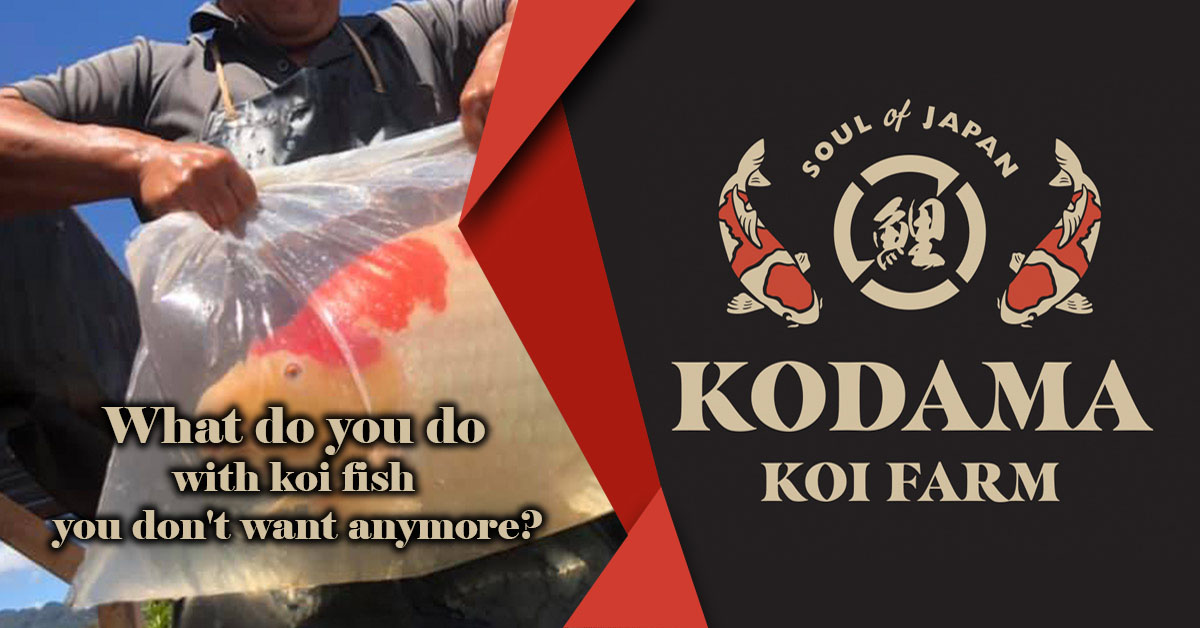
In this blog post, we will delve into the educational aspects of responsibly rehoming unwanted koi, exploring the various methods and considerations for ensuring the well-being of these aquatic creatures. Featured to the right is our recommended koi sock net with bag and long handle.
Additionally, we will throw in tips and information that is very important in re-homing koi and keeping them safe at all times.
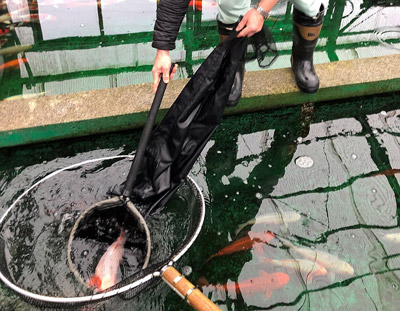
Proper and Responsible Approach to Rehoming Koi
Here are instances where koi owners find themselves faced with the difficult decision of rehoming their cherished aquatic pets. Various factors can lead to the need for rehoming koi. Understanding these common reasons sheds light on the responsibilities and considerations involved in caring for these beautiful fish.
Common Reasons for Rehoming Koi:
- Pond Size Constraints – Owners may realize their pond is too small to accommodate the growth and well-being of their koi.
- Changing Living Arrangements – Individuals relocating and may find it challenging to transport their koi or provide a suitable pond in the new location.
- Health Issues – Koi owners might face health concerns that limit their ability to care for their fish adequately
- Financial Constraints – Unforeseen financial difficulties can make it challenging to maintain a proper koi habitat.
- Overpopulation – Koi can reproduce quickly, leading to overpopulation issues in a pond.
Owners can explore various options for rehoming their koi, including reaching out to reputable koi organizations or clubs that may facilitate adoptions or provide guidance on finding suitable new homes for the fish. These organizations often have networks of experienced koi enthusiasts who are willing to adopt and care for koi in need of relocation.
Kodama Koi Farm, known for its expertise and commitment to koi welfare, gives you now insights into proper handling, transportation, and rehoming strategies.
How Do I Move Koi Safely?
Enjoy this video overview by Taro Kodama and read the detailed instructions on how to move koi in this article.
Make a big difference in your Koi’s exhaustion and stress levels when you have to relocate your pond fish. The health and well-being of your koi is of the utmost importance to us and so we put together this guide on moving your fish safely, to ensure our friends are taken care of! Let us know any other questions you have on the process.
!!! Dangers of Releasing Koi into the Wild !!!
Releasing koi into the wild can pose significant dangers to both the local ecosystem and the koi themselves.
While these ornamental fish may seem harmless, their introduction into natural habitats can have far-reaching and negative consequences:
Understanding Koi Care and Responsible Ownership
Recognize the commitments required for proper care, including managing water quality, nutrition, and space. Environmental considerations involve maintaining a healthy pond size, water quality, and suitable habitat.
Responsible ownership entails researching before acquiring koi and continuously educating oneself on proper care techniques.
Connect with local communities and online platforms for advice and support. Consider temporary re-homing options and upgrading pond facilities when necessary. Find suitable new homes through word-of-mouth or online platforms, emphasizing responsible rehoming to avoid ecological disruption. Investigate donating koi to educational institutions to promote environmental stewardship and hands-on learning experiences for students.
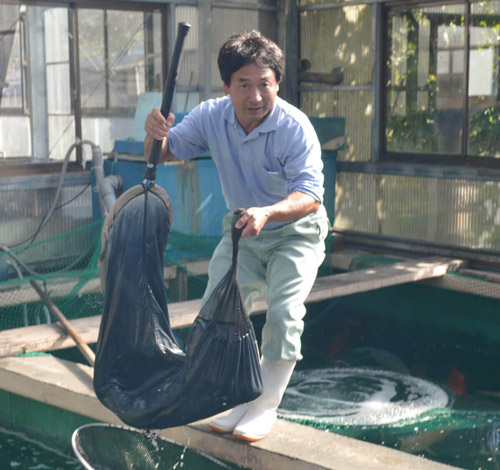
Step-By-Step Guide to Rehoming Your Koi
Whether you’re moving homes, renovating your pond, or simply looking to find a better environment for your beloved Koi fish, this comprehensive guide will walk you through the process with ease. From preparing your Koi for relocation to finding suitable new homes, we’ll cover every detail to ensure a smooth transition for both you and your aquatic companions.
Step 1: Assess the Situation Understand why you need to rehome your koi fish.
Step 2: Find Suitable Homes Look for local koi clubs or enthusiasts who can provide proper care.
Step 3: Prepare Your Koi Ensure they’re healthy and free from diseases.
Step 4: Transporting Your Koi Use a large container with pond water, avoiding plastic bags.
Step 5: Introducing Your Koi Acclimate them gradually to their new environment.
Step 6: Monitor Adaptation Keep an eye on their behavior and health after rehoming.
Step 7: Follow-Up and Support Stay in touch with the new owners to ensure proper care.
Koi Fish Rescue as an Option
In situations requiring Koi fish rescue, turn to Koi Rescue Organizations. These non-profits specialize in rescuing, rehabilitating, and rehoming Koi. Due to neglect or changes in environment, Koi may need assistance. These organizations offer medical care, rehab, and adoption programs. Find local or national groups listed here or search online. Animal shelters and aquatic societies may also aid in Koi rescue efforts.
List of Koi Rescue Organizations Nationwide
While individual efforts are commendable, numerous organizations across the United States specialize in koi rescue and rehoming. Here is a comprehensive list of Koi rescue companies in the USA, along with a brief description and website URL for each:
Koi Haven – California – Located in Southern California, Koi Haven is dedicated to rescuing and rehoming koi in the region. They prioritize the well-being of each fish and work closely with pond enthusiasts to find suitable new homes.
Midwest Koi Rescue – Illinois – Serving the Midwest, this organization is committed to rescuing and rehabilitating koi in need. They actively engage with the community, providing educational resources on responsible koi ownership.
East Coast Koi Rescue – New York – Focused on the East Coast, this rescue organization collaborates with pond owners to ensure the successful rehoming of koi. They also conduct workshops and seminars to promote awareness.
Rocky Mountain Koi Rescue – Colorado – Operating in the Rocky Mountain region, this rescue group specializes in rescuing koi from various situations. They prioritize creating a network of responsible adopters.
Southern Koi Rescue – Texas – Serving the southern states, this rescue organization is dedicated to rescuing and rehoming koi in need. They actively collaborate with local communities to promote responsible koi ownership.
Koi Rescue Team – Florida – Based in Florida, this organization focuses on rescuing and rehoming koi, providing a dedicated team for compassionate care.
Northwest Koi Rescue – Washington – Operating in the Pacific Northwest, this rescue group is committed to the rescue and rehabilitation of koi, emphasizing responsible ownership practices.
Tools and Tips for Successfully Re-Homing Koi Fish
Re-homing koi fish can be a challenging task requiring careful planning, proper tools, and a supportive environment. Whether you’re moving your koi to a new pond or finding them a new home, ensuring their safety and well-being is paramount. In this guide, we’ll explore essential tools and tips to facilitate the re-homing process smoothly and responsibly.
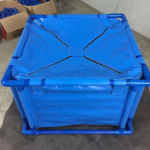
Transport Containers:
When transporting fish, it’s crucial to utilize large, sturdy containers explicitly crafted for this purpose. Prioritize cleanliness and chemical-free environments within the containers, ensuring secure lids to prevent any potential escapes. Moreover, insulated containers prove invaluable, particularly in extreme weather conditions, as they help regulate water temperature, safeguarding the well-being of the fish during transportation.
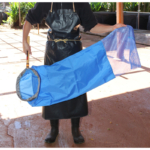
Nets and Handling Equipment:
To handle koi fish gently, invest in soft mesh nets specifically designed for catching and handling them. Avoid abrasive or rough materials that could potentially harm the delicate skin and fins of the koi. It’s advisable to have a variety of net sizes available to accommodate the different sizes of koi you may encounter, ensuring their safe and stress-free handling.
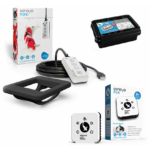
Water Testing Kits:
It’s essential to regularly test the water parameters in both the current and new environments when re-homing koi. Monitor pH, ammonia, nitrite, and nitrate levels diligently to maintain optimal water quality for the well-being of the koi. Adjust water conditions as necessary to minimize stress during the re-homing process, ensuring a smooth transition for the fish.
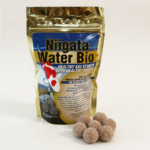
Water Treatments and Conditioners:
To safeguard the health of koi, employ a dechlorinator to neutralize harmful chemicals like chlorine and chloramine found in tap water. Additionally, contemplate incorporating a stress coat or similar products to alleviate stress and encourage the production of slime coat in the koi. Furthermore, establish a quarantine protocol for new koi arrivals to mitigate the risk of diseases and parasites spreading within the existing population.
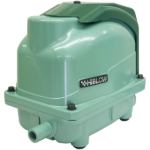
Oxygenation Equipment:
During transportation, it’s vital to provide adequate aeration to ensure koi have sufficient oxygen for their well-being. Utilize portable aerators or air pumps equipped with air stones to oxygenate the water inside transport containers effectively. Keep a close eye on oxygen levels, particularly during extended journeys or when dealing with crowded transport containers.

Expert Assistance and Support:
When re-homing koi, it’s beneficial to enlist the assistance of experienced koi enthusiasts or professionals, especially if uncertainties arise. Seek guidance from reputable sources regarding proper re-homing techniques and best practices to ensure the well-being of the koi. Consider joining online forums or local koi clubs to connect with fellow hobbyists, exchange valuable insights, and gain additional support throughout the re-homing process.
Explore the Kodama Koi Pond Supply Online Store today to discover a wider range of products.
Ensuring Proper Catch and Transport
Ensuring proper catch and transport in the fishing industry is crucial for maintaining quality and sustainability. This involves handling fish carefully at the point of catch, processing them promptly, and maintaining optimal temperature during transport. Quality packaging, compliance with regulations, and proper training for fishermen are essential. Additionally, traceability measures help track fish from catch to consumer, ensuring accountability and sustainability throughout the supply chain. These practices uphold quality standards, minimize waste, and contribute to the long-term health of marine ecosystems.
Can I Take My Unwanted Koi to a Pet Store?
Considerations when thinking about taking unwanted koi to a pet store include checking store policies, ensuring fish health, and considering alternative rehoming options. Responsible ownership entails prioritizing the well-being of the animals involved and making informed decisions about their care.
Is it Legal to Release Koi into Public Waterways?
Considerations when thinking about taking unwanted koi to a pet store include checking store policies, ensuring fish health, and considering alternative rehoming options. Responsible ownership entails prioritizing the well-being of the animals involved and making informed decisions about their care.

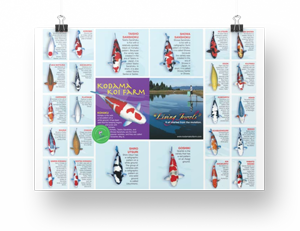

My husband and I are getting old and not able to care for our nine koi fish. We are considering to find them a home. We live in Stillwater ok. Someone please help.
Hello Mrs. Devers,
Have you tried https://www.southtexaskoi.org/koi-rescue ? They are to your South. Sorry we don’t know of any Orgranizations in Oklahoma.
Hi, we are old retired people and we have 7 koi fishes each about 11/2ft long. Lately my husband feels hard for him to take care of the fishes. He has the kois since they are small.
Need to rehome them to a good home and we live in Surprise, AZ Can anyone help us?
I’m welling to accept unwanted koi fish
We live in sw Washington and are changing our life style and landscaping. We need a less maintenance driven yard. We are in need of re homing our three two foot koi. Do you have any. Contacts in sw Washington?
Hello, I am a realtor and I am wrapping up the sale of a house and there are two Koi in a Koi pond that are being eaten by a local bobcat. The buyer coming in does not want to so I was reaching out to see if you have some way of helping with rehoming them. I don’t want them just to die in the tank or be eaten by a bobcat
What area are you located?
I live in a small development in Conway S. Carolina that has two ponds near the entrance. There are currently bass, crappie and blue gill inhabiting the ponds. I understand that Koi are a great species to introduce for the purposes of allergy control. If this is the case I would love to have some placed in the ponds. I am retired, so if there is any additional care that they require, I would absolutely be able to provide it.
For ALGAE.
I would be willing to rehome koi if they can be shipped to NC.